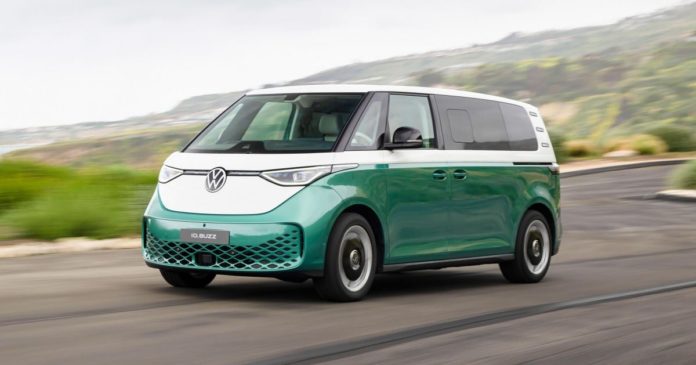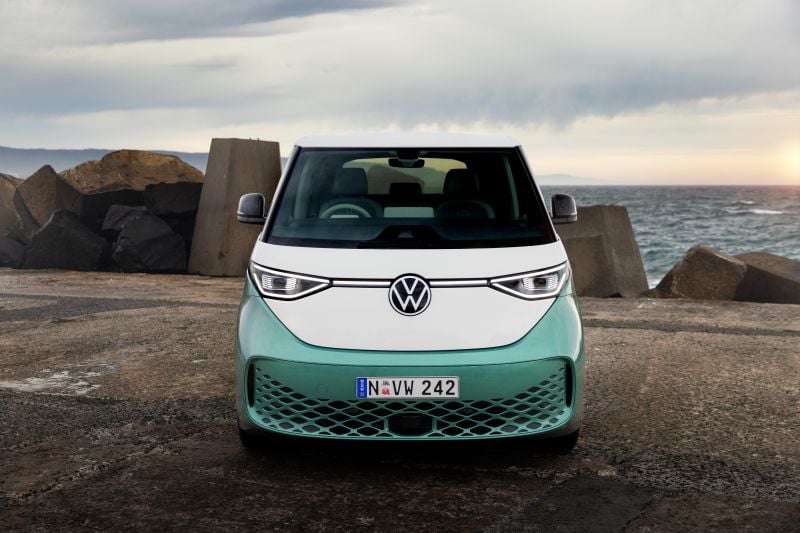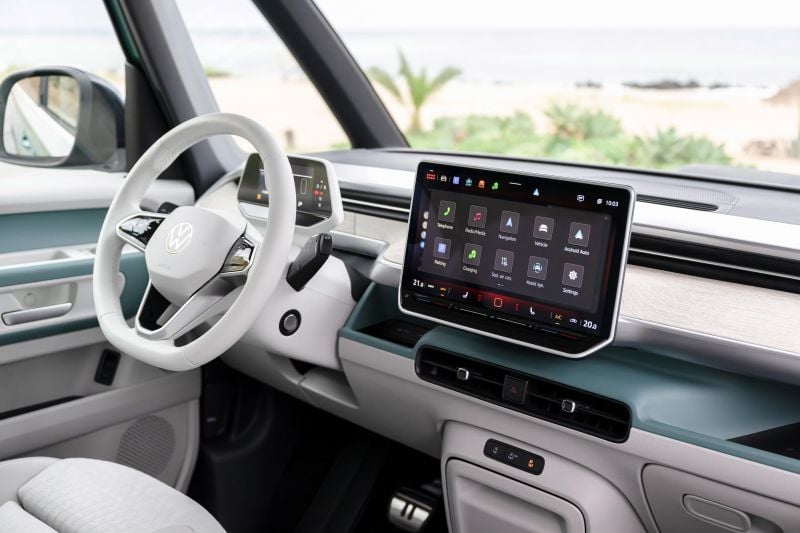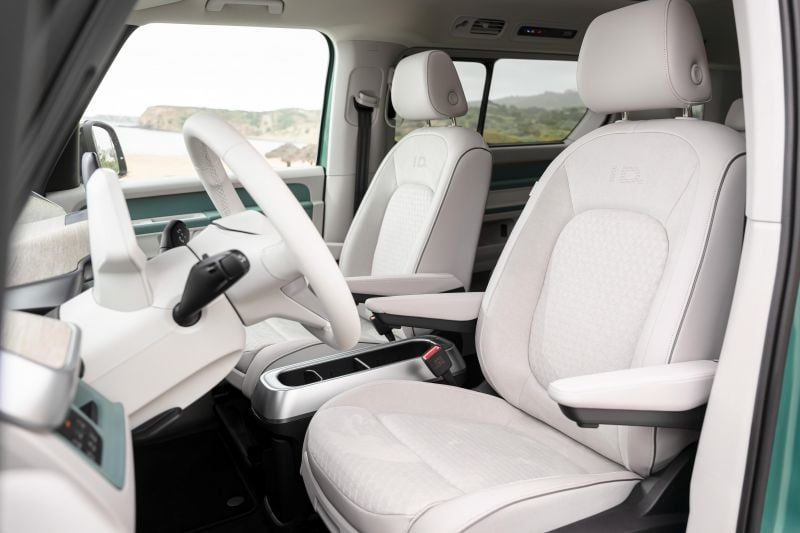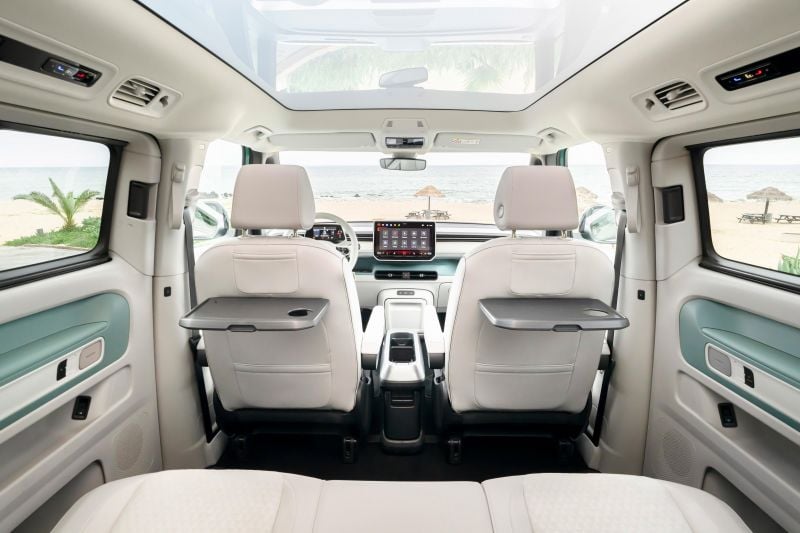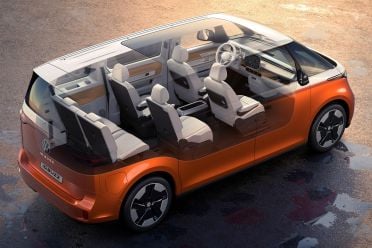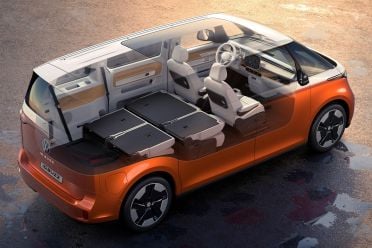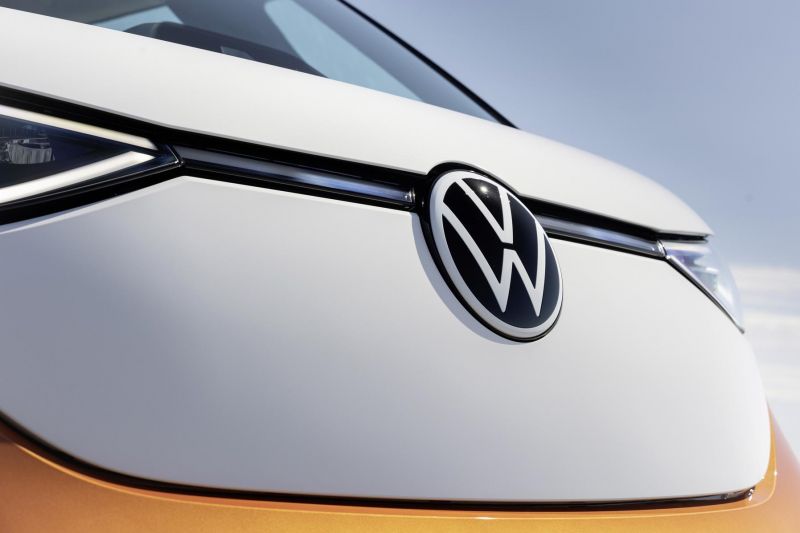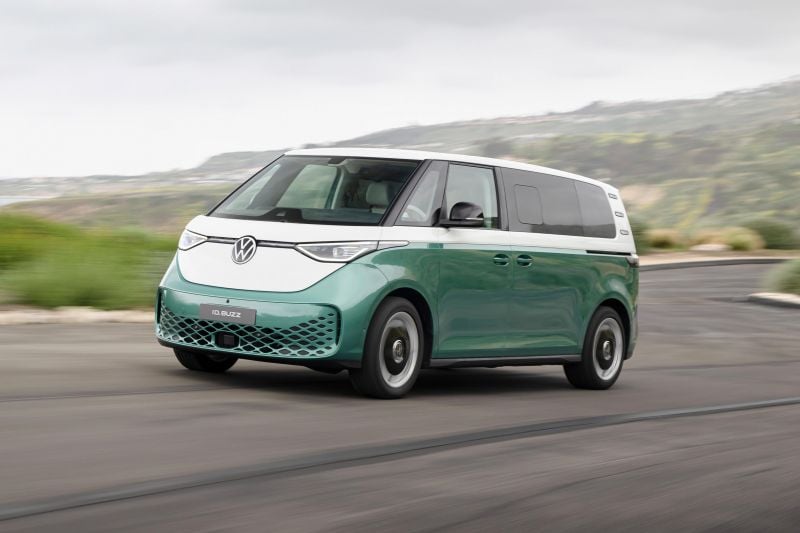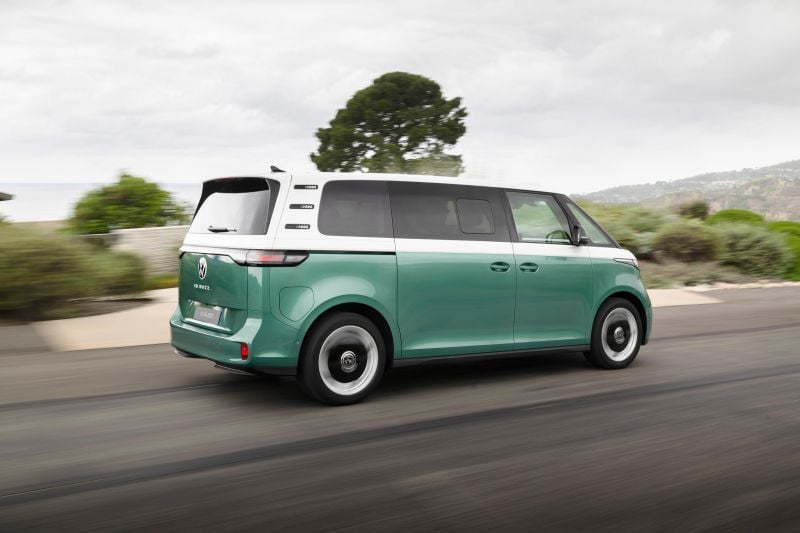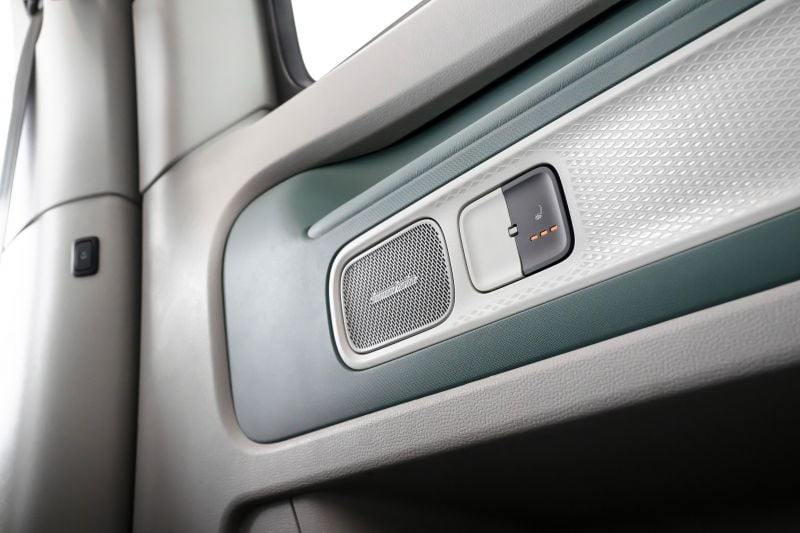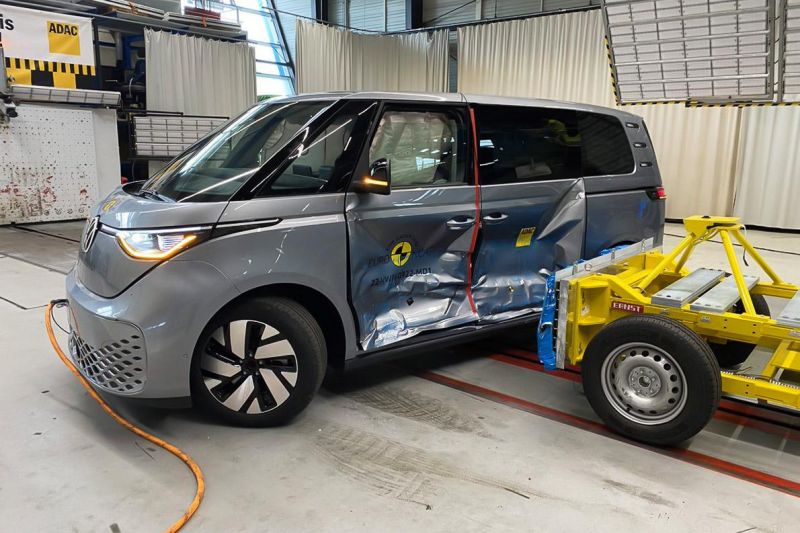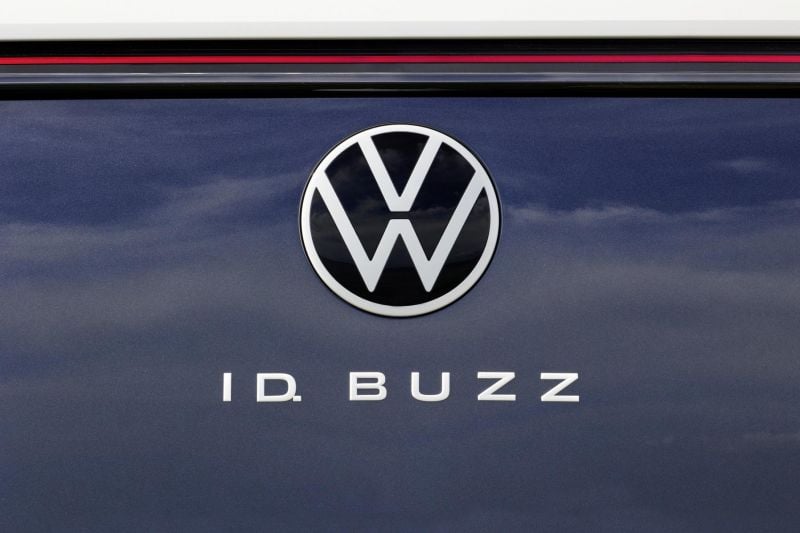It seems like it has taken a very long time for the first all-electric VW Kombi – or, as it’s formally known, the Volkswagen ID. Buzz – to reach our market.
But in advance of the long-awaited Australian launch of the new battery-electric people mover later this year, we had the chance to drive the long-wheelbase (LWB) version in Europe.
You’ll find Australian pricing and initial specifications in this review, which we hope will help you figure out whether you should put your hand up for one of these vans.
How does the Volkswagen ID.Buzz compare?
View a detailed breakdown of the Volkswagen ID.Buzz against similarly sized vehicles.

Volkswagen
ID.Buzz
How much does the Volkswagen ID. Buzz cost?
Local pricing has been announced for the VW ID. Buzz LWB and it caught a few people off guard.
| Model | Price before on-road costs |
|---|---|
| 2025 Volkswagen ID. Buzz Pro SWB BEV560 RWD | $87,990 |
| 2025 Volkswagen ID. Buzz Pro LWB BEV560 RWD | $91,290 |
| 2025 Volkswagen ID. Buzz GTX LWB BEV 4Motion AWD | $109,990 |
It was originally expected the longer version of the Buzz would cost $100,000-plus here, but the German brand managed to sneak both the SWB and LWB models under the Luxury Car Tax (LCT).
This means buyers who plan to take up a lease on an ID. Buzz will be able to skirt around the Fringe Benefits Tax (FBT) and potentially save tens of thousands of dollars.
To see how the Volkswagen ID. Buzz stacks up against its rivals, use our comparison tool.
What is the Volkswagen ID. Buzz like on the inside?
Just like the original Kombi models of decades past, the exclusively electric ID. Buzz people movers – and their more utilitarian ID. Buzz Cargo van siblings – were developed by the Nutzfahrzeug team (Volkswagen Commercial Vehicles).
But the new-age Kombi EV eschews the ladder-frame roots of its forebears (and the MQB unibody platform of its upcoming VW Multivan T7 stablemate) in favour of the German auto giant’s dedicated-electric MEB chassis, making it the most car-like ‘Kombi’ ever.
While its interior does have some hard plastic finishes on the doors and dash, it also offers the kind of cleverness that courier drivers and people with a fleet focus have only ever dreamed of.
There are also some of the bold colour choices that in this application look so brilliant. Yellow and white? You don’t get that in a Kia EV9! There is a small but useful digital instrument cluster in front of the driver, which shows you the info you need to see at a glance including range, speed, speed limit, outside temperature and more.
The 12.9-inch touchscreen has a much more usable software design than the pre-update version, with a favourites bar at the top allowing you to jump into submenus like the autonomous parking system, driver assistance settings, drive mode and a number of other controls.
The menus are simpler than in the pre-update model, which had similar controls to the Golf Mk8.
Even so, there are some frustrations.
The steering wheel features haptic controls that are easier to bump than conventional buttons – especially the steering wheel heating button.
There’s also some learning required when it comes to interactions with the media system. While there is a home bar at the bottom of the screen for climate controls, there are also haptic touch-sensitive sliders for the dual-zone climate control, plus a central volume slider.
Back to the brilliant bits. There’s a great slot-style wireless phone charger near the steering wheel, plus an absolute abundance of USB-C charge ports, including up on the dash, in each of the front doors, in the rear sliding doors and in the back row.
Between the front seats there’s a removable storage cubby that allows you to holster any loose goodies. It houses an ice-scraper and bottle-opener, plus movable divisions to provide more flexible storage.
The doors have three layers of stowage and there’s a big shelf in front of the passenger, plus both front seats have adjustable armrests – great for chilling while you’re charging.
In the second row there’s a set of buttons to electronically open or close the side sliding doors and there are also slide-opening windows.
On the seat backs there are flip-up tables for iPads or snacking on and there are multiple pockets for storage. Likewise, there are trenches in the doors for loose items and bottles, but none of them are lined so expect some rattles on the run.
There are ceiling-mounted air vents and a climate control system for the rear seats, plus grab handles for both rows.
The second-row seats offer more than enough space for someone my size (182cm) behind my own driving position.
Hopping into the third row, I was impressed by the simplicity of the tilt/slide second-row seat and the ease of access. Kids will be able to jump up and walk in, and adults won’t need to stoop or crawl – there’s heaps of space in the doorway and lots of foot room.
With ample third-row head-, shoulder-, foot- and knee-room, this vehicle is an excellent choice for a family with big teens or extroverted youngsters with many friends.
The back row has lights, vents, grab-handles, cup holders, a storage box either side with USB-C ports and padded armrests with ID. Buzz embossed into them, plus a great outward view.
Boot space obviously depends on the configuration of the seats and it doesn’t have a tricky cargo area with stowable third-row seats like in the Kia Carnival.
Volkswagen claims there’s 306 litres of cargo capacity with all three rows in use, and that increases to more than 1000L with the third row folded down.
There’s an available shelf system that can help you separate your luggage or shopping, with storage boxes below for charge cables. Sadly, this big machine doesn’t come with a spare wheel. Instead you only get a tyre repair kit.
You should also be mindful that, despite the fact this is a big vehicle designed to seat seven, it has a payload of just 545kg (according to Euro specs).
What’s under the bonnet?
When Paul and I drove the ID. Buzz in Europe in 2023, it was a touch underpowered. This has since been rectified with a new electric motor churning out heaps more grunt than the pre-update model’s 150kW/310Nm unit.
| Specifications | Volkswagen ID. Buzz Pro LWB |
|---|---|
| Drivetrain | Single rear-mounted electric motor |
| Battery | 86kWh (usable) lithium-ion |
| Power | 210kW |
| Torque | 560Nm |
| Driven wheels | RWD |
| Weight | 2795kg |
| 0-100km/h (claimed) | 7.9 secs |
| Power consumption (claimed) | 20.6kWh/100km (EU-spec WLTP) |
| Power consumption (observed) | 21.4kWh/100km |
| Claimed range | TBD |
| Max AC charge rate | 11kW |
| Max DC charge rate | 200kW |
Full charging, efficiency and charging times details for each grade will be detailed with our local launch coverage soon.
To see how the Volkswagen ID. Buzz stacks up against its rivals, use our comparison tool.
How does the Volkswagen ID. Buzz drive?
The original ID. Buzz SWB with the lower-output motor offered relatively modest performance. But the new motor with 210kW/560Nm is a much more fitting unit for a vehicle of this size and weight.
Being rear-wheel drive, you can really liberate that extra pulling power and the ID. Buzz has better cornering dynamism than you might expect for such a big bus.
The acceleration from standstill impresses and that is where electric cars like this really do amaze.
But yes, it does feel its size. If you aren’t used to driving something this large, you might be surprised by how big it feels.
The upside of that is great visibility from the driver’s seat. The cockpit is almost like a fishbowl, with massive views out all the front and side windows. Over-the-shoulder visibility is decent too.
One thing I wish was better was rearward visibility. The ID. Buzz misses out on a digital rear-view mirror, unlike plenty of other three-row vehicles at this price point. Instead, you see a sea of head restraints in the rear-vision mirror.
Like the name suggests, the ID. Buzz LWB has a very long wheelbase and that means that it feels quite planted on the road. It’s a big bus, but it boogies.
The steering is very natural-feeling and manageable, but it’s also a little weighty. In some situations, I found it to feel a little artificially weighted, particularly during low speeds when moving the car in and out of parking spots. That’s a minor issue.
For the majority of people who are looking at this size of vehicle, it’s definitely going to be better and easier to drive than you’re expecting.
-
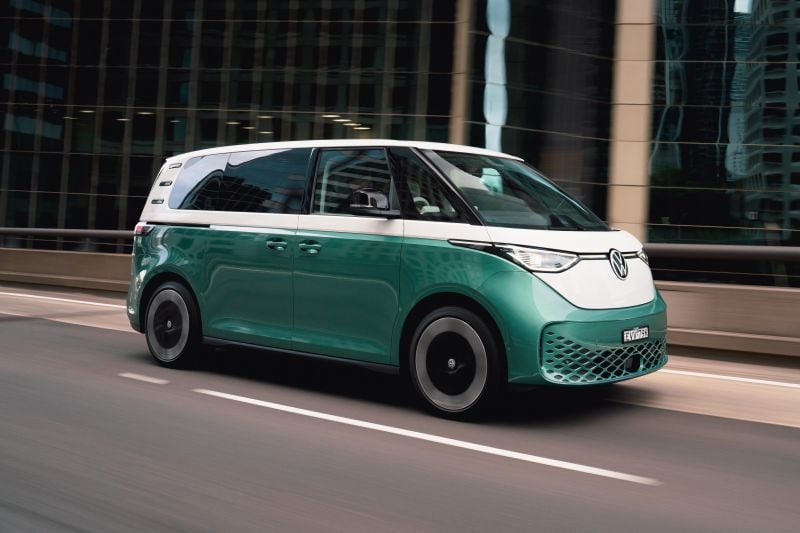
SWB Pro shown
The regenerative braking system pretty much covers all braking requirements, but excels in stop-start, day-to-day duties. Twist the gear selector to ‘B’ mode and the regen acts more assertively, offering an element of single-pedal driving capability.
Although the regenerative braking function is handy, the brakes themselves are decent for such a big vehicle. But if you’re hustling a little bit and you want to come to a standstill, you need to really stand on the brake pedal to get this heavy vehicle to pull itself up.
Aussie-specific WLTP efficiency figures are yet to be confirmed, but European data claims a 20.6kWh per 100km fgure for this configuration. That isn’t bad considering the vehicle weighs in at no less than 2795kg unladen.
After a few hundred kilometres of mixed driving in Germany, I observed a displayed figure of 21.4kWh/100km, which I was more than impressed with considering the circumstances (two-up with luggage and some spirited driving).
What do you get?
There are two trim levels for the ID. Buzz LWB: Pro and GTX.
Volkswagen ID. Buzz Pro SWB highlights:
- IQ. Light Matrix LED headlights
- ‘Tilburg’ 19-inch black, diamond-turned alloy wheels
- Tyre pressure monitoring
- Power tailgate
- Rain-sensing wipers
- Heated washer nozzles
- Rear wiper
- 18-inch front disc brakes with brake pad wear indicator
- 11-inch rear drum brakes
- Electric parking brake
- Body-coloured bumpers and door handles
- Dark-tinted rear glass
- Power sliding doors
- Power-folding, heated exterior mirrors
- High-gloss mirror housings
- Proximity entry with push-button start
- Heated steering wheel
- Leather-wrapped steering wheel
- Manual height-adjustable front seats
- Heated front seats
- ID. Buzz Box removable centre console with multiple storage compartments
- Stainless steel pedals
- Tufted velour floor covering
- Tri-zone climate control
- 9-speaker sound system
- 12.9-inch touchscreen infotainment system
- Wireless Apple CarPlay and Android Auto
- IDA voice assistant
- DAB+ digital radio
- Wireless phone charger
ID. Buzz Pro LWB adds:
- Third row of seating
- 19-inch front disc brakes
- 13-inch rear drum brakes
Options
While the lower-than-expected pricing is impressive, for buyers of Pro variants there are still plenty of optional extras that might tickle your fancy.
Infotainment Package plus ($2200) adds:
- Harman Kardon sound system
- Head-up display
Interior Style Package ($6470) adds:
- Seaquel fabric
- Luggage area load platform and net partition
- Rear privacy glass
- Heated front seats
- Heated outboard second-row seats
Premium Interior Style Package ($6970) adds:
- ArtVelours upholstery
- Luggage area load platform and net partition
- Rear privacy glass
- Heated front seats
- Heated outboard second-row seats
The following standalone options are available:
- 21-inch ‘Bromberg’ black, diamond-turned alloy wheels: $1900
- Panoramic sunroof with smart glass: $3290
So, while we were surprised by the sub-$100k price, it would be easy to option up a LWB model to well into the six-figure space.
Is the Volkswagen ID. Buzz safe?
It has a five-star safety rating from Euro NCAP based on testing conducted in 2022, but Australian sister authority ANCAP has yet to announce a rating locally.
| Category | Volkswagen ID. Buzz |
|---|---|
| Adult occupant protection | 92 per cent |
| Child occupant protection | 87 per cent |
| Vulnerable road user protection | 60 per cent |
| Safety assist | 90 per cent |
Standard safety equipment includes:
- Autonomous emergency braking
- Pedestrian detection
- Cyclist detection
- Swerve support
- Oncoming vehicle braking when turning
- Blind-spot monitoring
- Driver attention monitoring
- Lane-keep assist
- Rear cross-traffic alert
- Safe exit warning
- Surround-view camera
- Travel Assist
- Lane centring
- Adaptive cruise control with stop/go
- Front and rear parking sensors
- Front, front-side, front-centre and curtain airbags
There are top-tether anchor points for child seats fitted in all three seats in the second row, plus ISOFIX points for the two outboard seats. In LWB models, the third row also features ISOFIX points and top-tethers, making for the possibility of fitting five child seats.
How much does the Volkswagen ID. Buzz cost to run?
Volkswagen Australia offers a five-year, unlimited kilometre warranty for its entire line-up.
This fully-electric VW will also have an eight-year warranty for its high-voltage battery pack, which is in line with the majority of brands.
Servicing costs and intervals are still to be announced for Australia, but you can expect Volkswagen to offer a mix of pay-as-you-go capped-price servicing, as well as the choice of a prepaid care plan – possibly for up to 10 years.
To see how the Volkswagen ID. Buzz stacks up against its rivals, use our comparison tool.
CarExpert’s take on the Volkswagen ID. Buzz
There is a lot to like about the ID. Buzz LWB. Despite its sheer size, it is more fun to drive than you might expect, but also way more practical than any electric SUV on the market.
With ample interior space, clever storage options and attractive pricing, this is a walk-up start for a customer who wants a fully electric family car.
Interested in buying a Volkswagen ID. Buzz? Get in touch with one of CarExpert’s trusted dealers here
Click the images for the full gallery
MORE: Everything Volkswagen ID. Buzz

